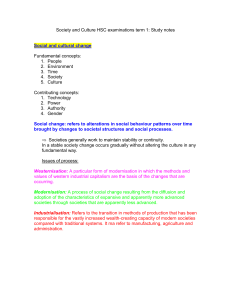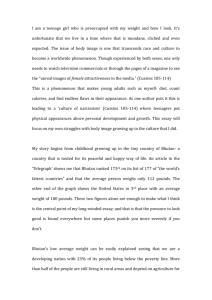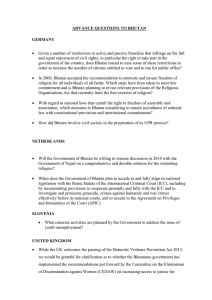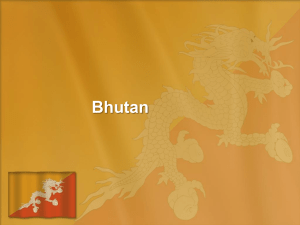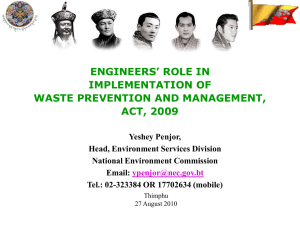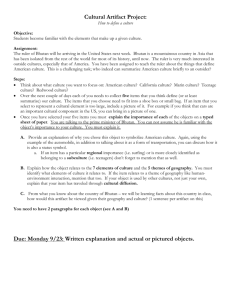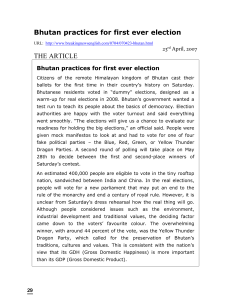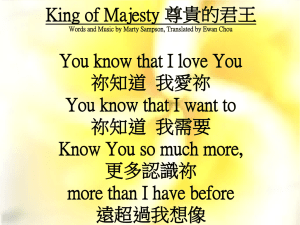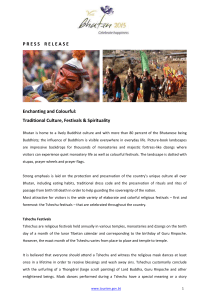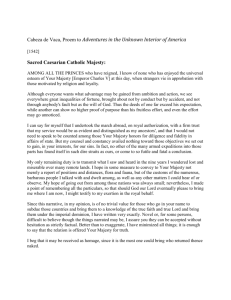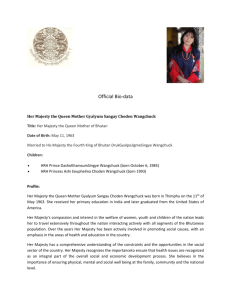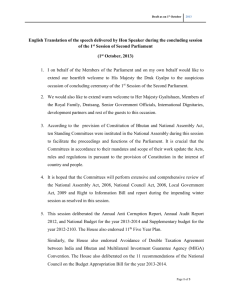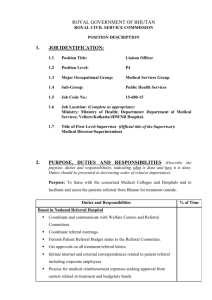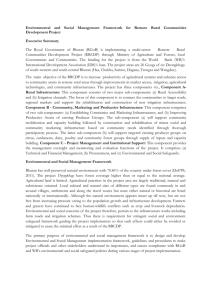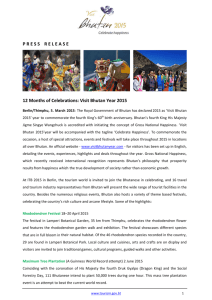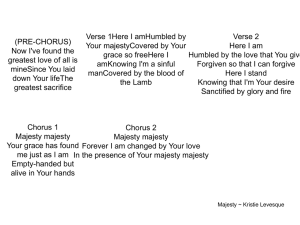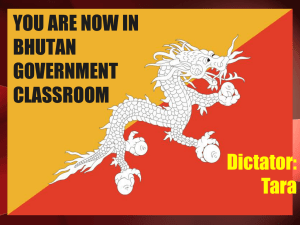Evolution of Bhutanese Legal System
advertisement
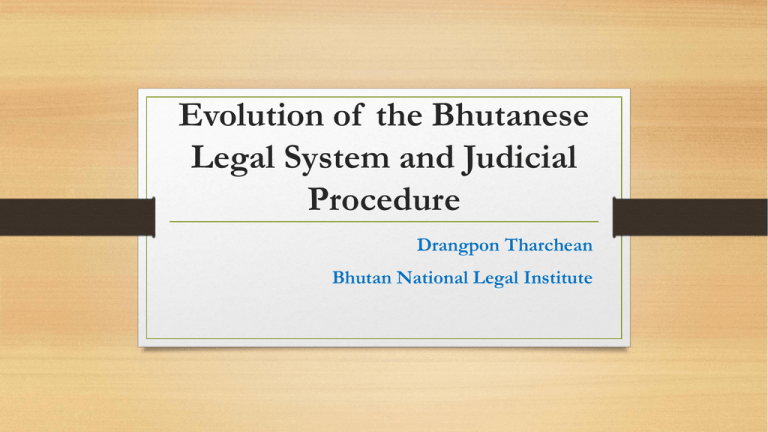
Evolution of the Bhutanese Legal System and Judicial Procedure Drangpon Tharchean Bhutan National Legal Institute 1614 – Chayig Chhenmo 1636 – First set of Bhutanese Law 1652 – Codification of Law Completed Historical Background Code based on fundamental teachings of Buddhism Addressed violations of both secular and temporal laws Ten pious acts – Lhachoe Gyewa Chu Sixteen virtuous acts of social piety – Michoe Tsangma Chudrug Zhabdrung’s Code It’s a basis of Bhutanese legal system Amended several times – 10th Desi Mipham Wangpo consolidated and amended certain parts In mid-18th Century, 13th Desi Choegyal Sherab Wangchuk incorporated amendments First and second kings made further modifications Principles of Buddhism and natural justice have not changed and have always been upheld. Evolved over centuries reflecting culture and traditional lifestyles, keeping stream of justice clear and pure Thrimzhung Chhenmo His Majesty Third King’s reign the National Assembly of Bhutan enacted the first comprehensive codified laws known as the Thrimzhung Chhenmo or the Supreme Law. Almost all modern categories of criminal offenses and corresponding penalties were enshrined under this provisions. His Majesty the Fourth King initiated various amendments and enactments of laws to respond fully and effectively to the changing needs of our nation Development of Bhutanese Judiciary 1961 – Appointment of Judges and separation of powers 1968 – Establishment of High Court 1978 – Establishment of Sub-District Court 2008 – Adoption of Constitution Structure of Courts Supreme Court High Court District Court Sub-District Court Judicial Process 1. Informal Process • The Court system in Bhutan is established only in 1960s • Mediation –Thrimshung Chhenmo • Adjudication without Proceedings – Chapter 23 of the Civil and Criminal Procedure Code 2001 • Alternative Dispute Resolution Act 2013 • The parties can also receive assistance of a Gup, Chipon, Mang-mi or Barmi, as mediators. The final settlement must be through voluntary consent and signed by the parties and mediators. Judicial Process Contd... 2. Formal Process • Only a judge duly appointed by His Majesty is empowered to hear and decide cases • Drangpons were appointed in few Dzongkhags in 1960 • High Court established in 1968 • A judiciary established separate from Legislature and Executive, fully independent in the exercise of its function • Civil and Criminal Procedure Code, 2001 and Constitution, 2008 Conclusion • As the informal or the traditional mechanism of dispute settlement played a vital role in Bhutan, there is a need to promote and strengthen this system at the grass roots level. • It is hoped that with this symposium, the awareness on the system of legal aid is created in the country.
